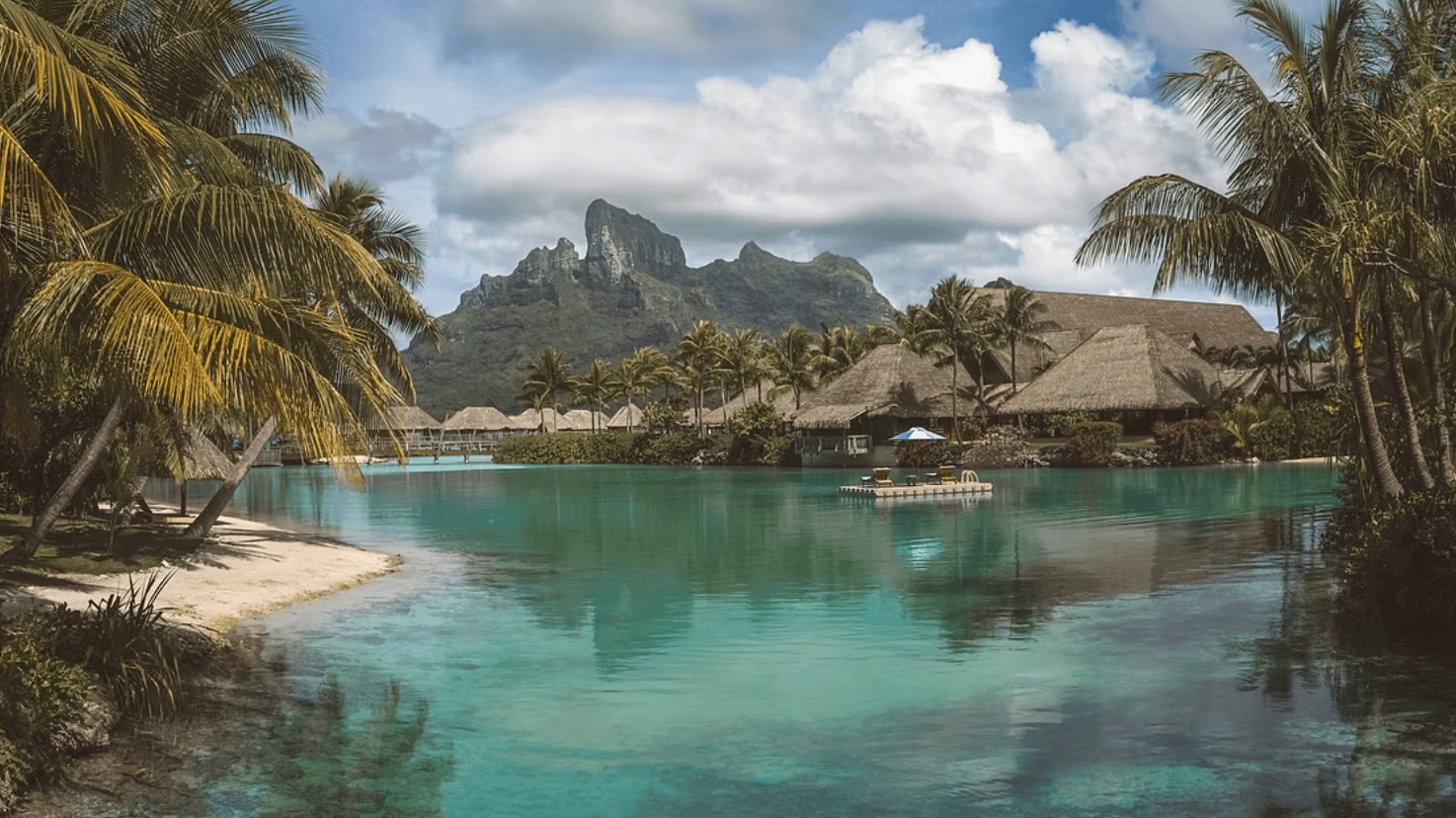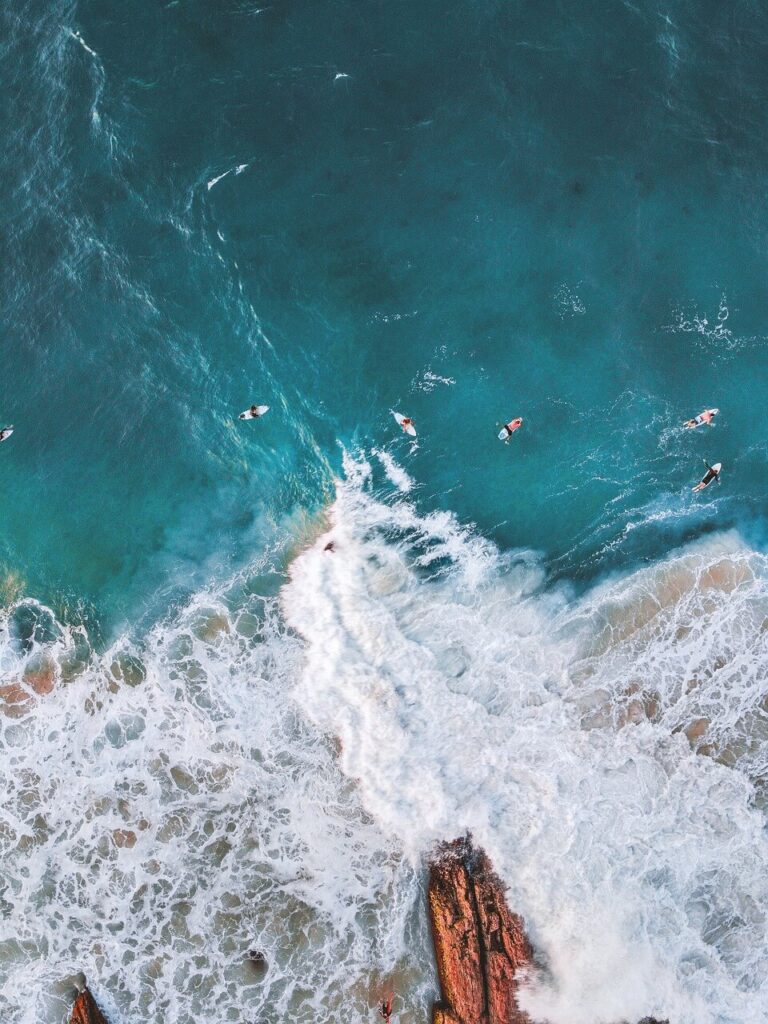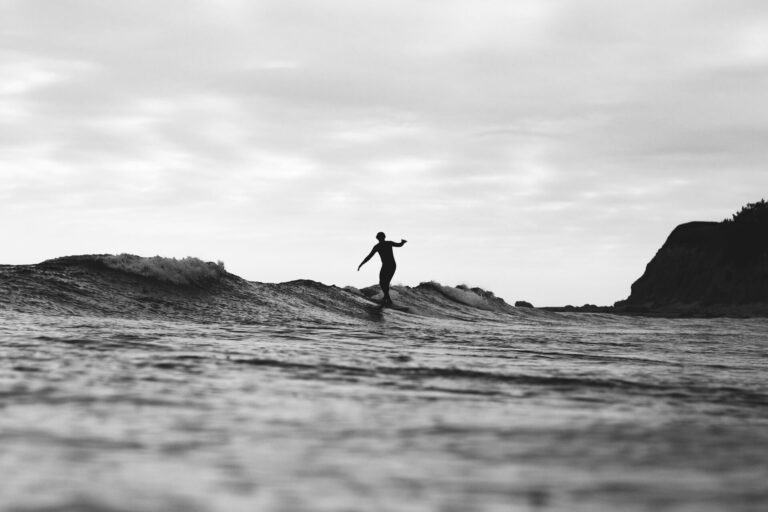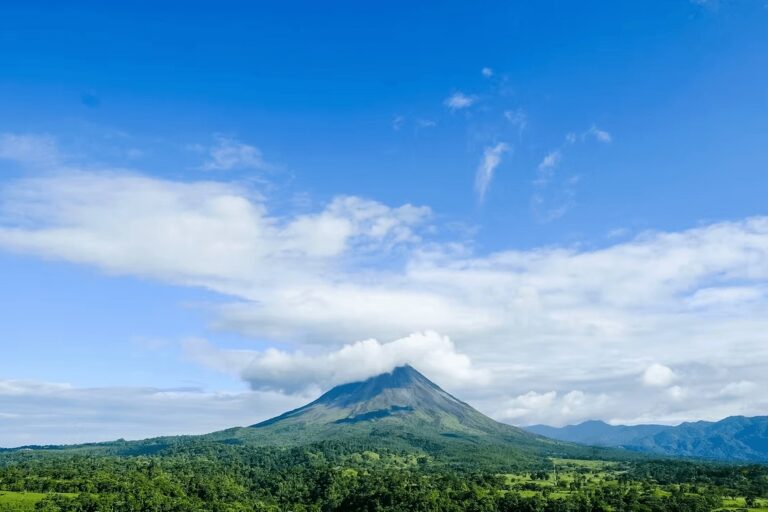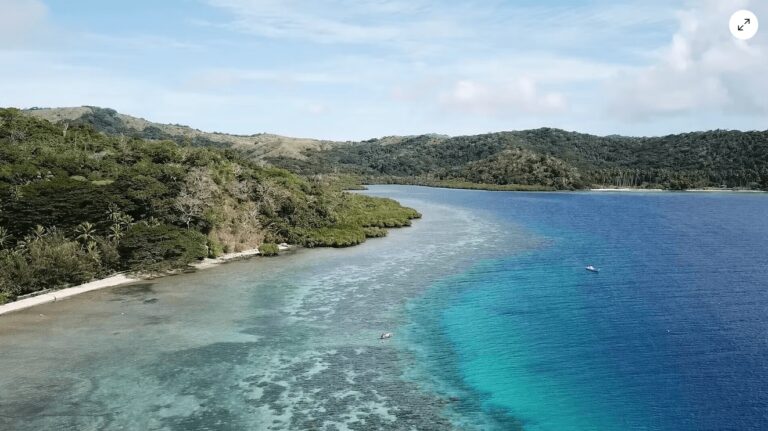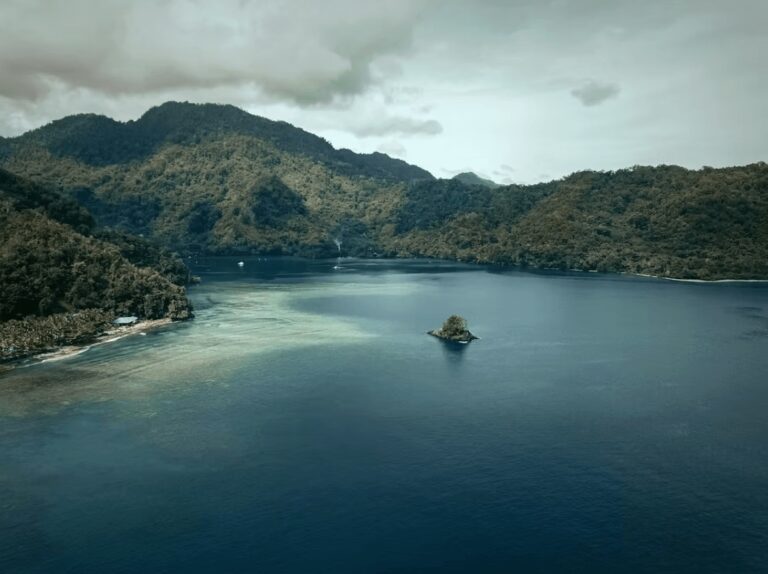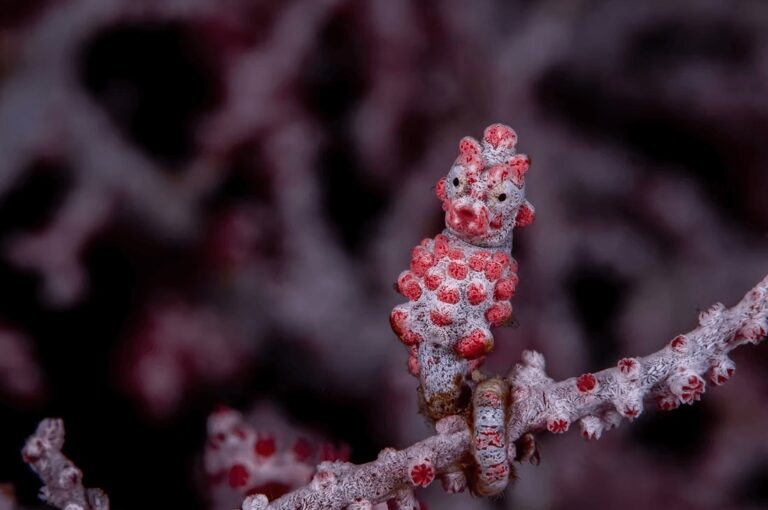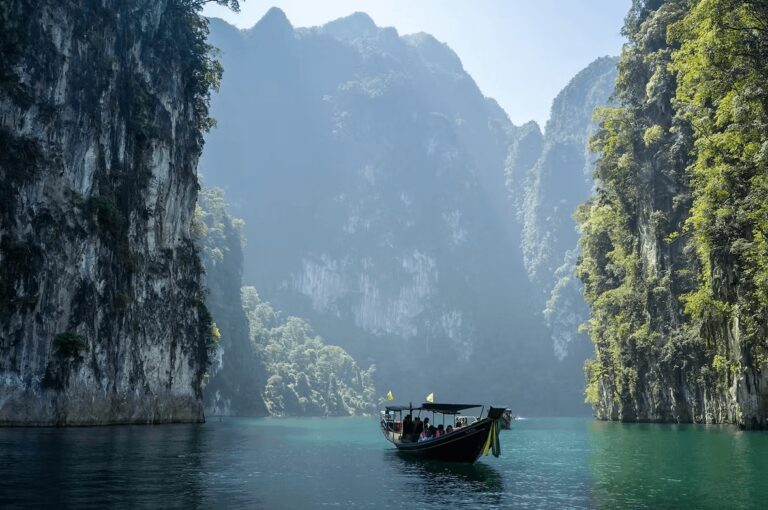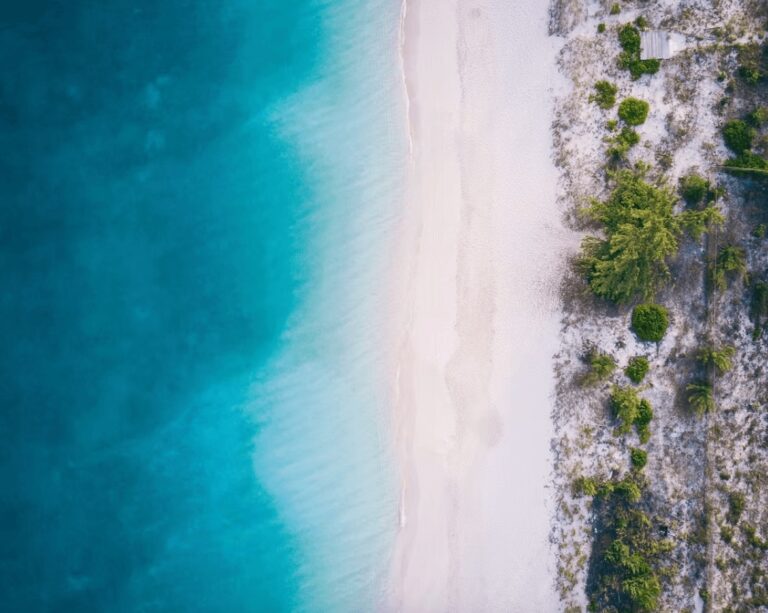Diving in French Polynesia: Best dive sites + eco-friendly resorts
Looking for the best scuba diving in French Polynesia? Discover some of the region’s most spectacular scuba destinations, plus eco-friendly resorts for a sustainable stay.
With its mind-blowing pelagic encounters (there are literally “walls of sharks”) and spectacular coral reefs, French Polynesia offers some of the most thrilling dive experiences in Oceania.
This far-flung territory in the South Pacific Ocean caters to divers of all skill levels, from complete beginners to seasoned veterans seeking swift channel currents.
However, with over 100 islands to explore, each with its own unique underwater landscapes and dive sites, it can be difficult to know where to begin. From the Tuamotus to the Society Islands and the remote Marquesas, where should you focus your French Polynesia scuba diving vacation?
In this article, we’ll share with you all the best places to dive in French Polynesia and what you can expect at each destination. Plus, we’ll provide recommendations for eco-friendly hotels and resorts in French Polynesia to help you plan a sustainable scuba vacation.
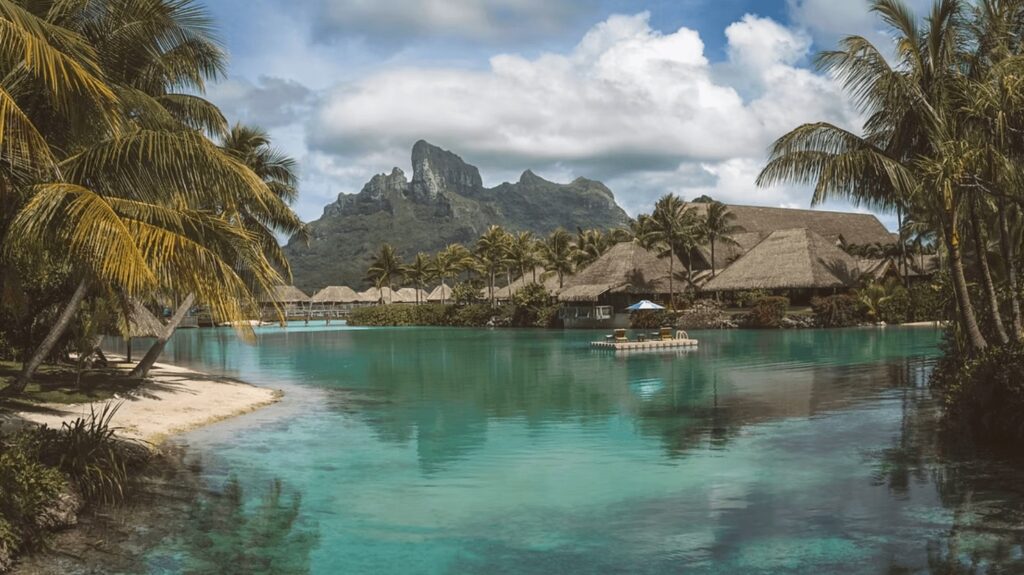
This article contains affiliate links, which means when you make a purchase through that link, I earn a small commission. Affiliate links come at no cost to you and ensure my content remains free!
Best places to dive in French Polynesia
Diving in the Tuamotu Islands
Best place for diving in French Polynesia
Sprawling across an area of more than three million square kilometres, the Tuamotu Islands offer some of the best diving in French Polynesia.
The archipelago encompasses Rangiroa, Fakarava, Makatea, Manihi and Tikehau. These islands are separated by narrow passes that offer thrilling drift diving experiences and plunging walls.
Rangiroa and Fakarava are the main diving hubs, although there are also a handful of dive centres on Tikehau and Manihi.
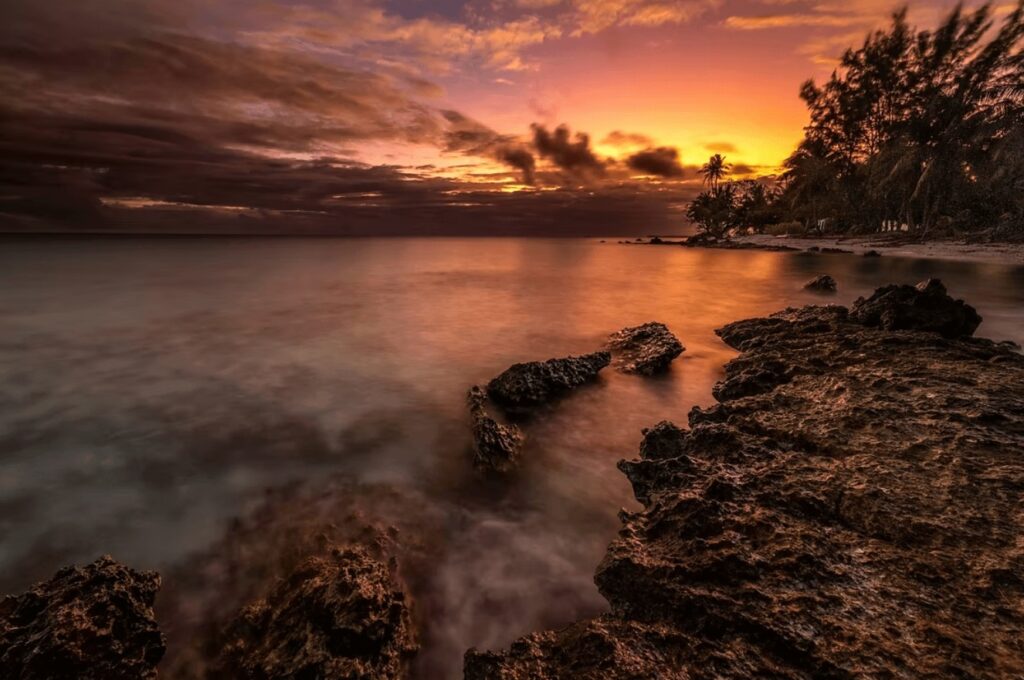
Diving in Rangiroa Atoll
Best place for land-based diving in the Tuamotu Islands
Also known as Te Kokōta, Rangiroa is a sprawling atoll. In fact, it’s the largest in the Tuamotus.
Rangiroa offers a wealth of easy-to-access lagoon dive sites that are teeming with schools of tropical reef fish and frequented by sea turtles. This makes it perfect for a land-based dive vacation in French Polynesia.
But the real allure of diving in Rangiroa lies in the exhilarating passes (Avatoru and Tiputa) and canyon dives found offshore. The strong ocean currents here attract an incredible array of marine life.
Experienced divers can expect abundant sharks, massive schools of pelagic fish and playful dolphins, as well as visiting manta rays.
Beyond its world-class diving, Rangiroa is home to traditional coral churches and craft centres that showcase the unique heritage of the region. It’s also appealing to wine lovers, who can visit the Rangiroa Wine Cellar to discover how tropical wines are produced throughout the atoll.
Eco-friendly hotels and resorts in Rangiroa
Hotel Kia Ora Resort & Spa
Overlooking a crystal clear lagoon between the passes of Avatoru and Tiputa, this Rangiroa dive resort is perfectly positioned for underwater adventures. It features Polynesian-style bungalows and suites nestled with tropical gardens, as well as overwater villas and an indulgent spa.
Blue Velvet Diving Center is the in-house operator and offers daily dives to all the best spots.
“Beautiful base for serious scuba diving.” – Ignacy (read more reviews here)
Want to indulge in a luxury dive trip? Discover 7 of the best eco-luxe dive resorts around the globe for a sustainable scuba vacation.
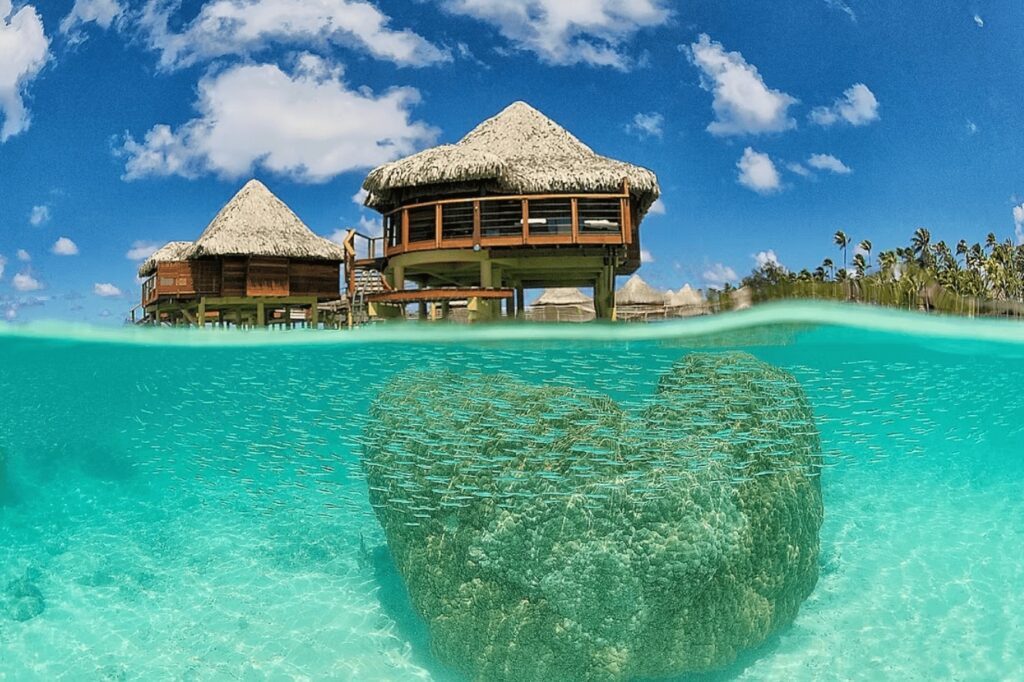
Diving in Fakarava Atoll
Best place for liveaboard diving in the Tuamotu Islands
Designated as a UNESCO Biosphere Reserve, Fakarava Atoll is the best place for a liveaboard dive trip in French Polynesia.
It’s home to the second largest lagoon in the Tuamotus. Fakarava is framed by a rectangular reef that has essentially created an underwater nursery that protects several endemic marine species.
Central to Fakarava’s allure as a dive destination are its two legendary passes – Garuae Pass (the widest navigable pass in French Polynesia) and Tumakohua Pass (renowned for its abundance of lemon, whitecap and hammerhead sharks).
Adding to the experience are serene lagoon dives that allow you to leisurely explore the atoll’s calm, crystalline waters and healthy coral gardens.
When you’re not diving, you can stroll along one of the atoll’s idyllic pink sand beaches or rent a bicycle to explore the area.
Fakarava is ideally explored on a French Polynesia liveaboard trip due to its remote setting. However, there are a handful of rustic lodges and resorts where you can completely disconnect from the world.
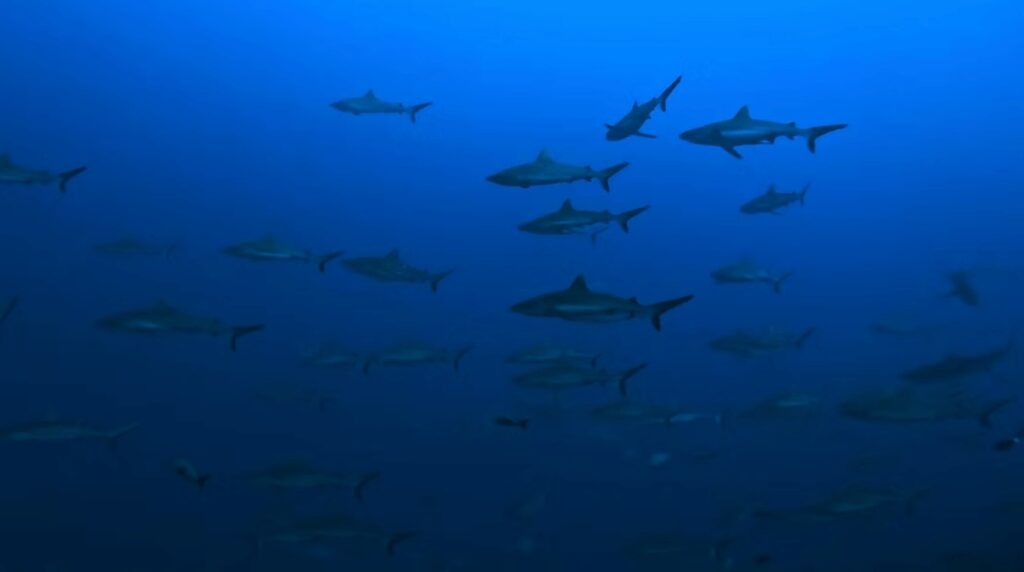
Eco-friendly hotels and resorts in Fakarava
Raimiti
Tucked away on a remote motu in the middle of the lagoon, this eco-friendly Fakarava lodge is an ideal base for divers. While there’s no internet or air-conditioning, the rustic bungalows boast gorgeous views across the turquoise waters and the Polynesian hospitality is a treat.
The in-house dive operator, Enata Fakarava Diving, offers daily scuba trips, as well as snorkelling excursions.
“It’s just as their website and all the 5-star reviews say. Raimiti isn’t for everyone. For me, it was perfect!” (read more reviews here)
Diving in the Marquesas Islands
Best place for off-the-beaten-path diving in French Polynesia
For those seeking a truly remote and off-the-beaten-path diving vacation, the Marquesas Islands offer an unparalleled experience.
This far-flung archipelago, located thousands of kilometres from any major landmass, is a diver’s paradise. We’re not exaggerating when we say it’s teeming with a unique and staggering marine ecosystem.
While the waters may not boast the crystal-clear visibility found in other parts of French Polynesia (largely due to the lack of a barrier reef), the isolation of the Marquesas has created an underwater world unlike any other.
Towering pinnacles and rocky reefs play host to a dazzling array of marine life. You can expect everything from vast schools of tropical fish to scalloped hammerhead sharks and gigantic manta rays.
The Marquesas Islands are also one of the best places in the world to spot the enigmatic melon-headed whale, as known as the “little killer whale”.
The main islands of Nuku Hiva, Hiva Oa, Ua Pou and Fatu Hiva are all worth visiting. Nuku Hiva and Hiva Oa are the only ones with dedicated dive centres.
The islands themselves are an adventure-lover’s dream, with tumbling waterfalls cascading through verdant rainforests that conceal a wealth of pre-European cultural artefacts.
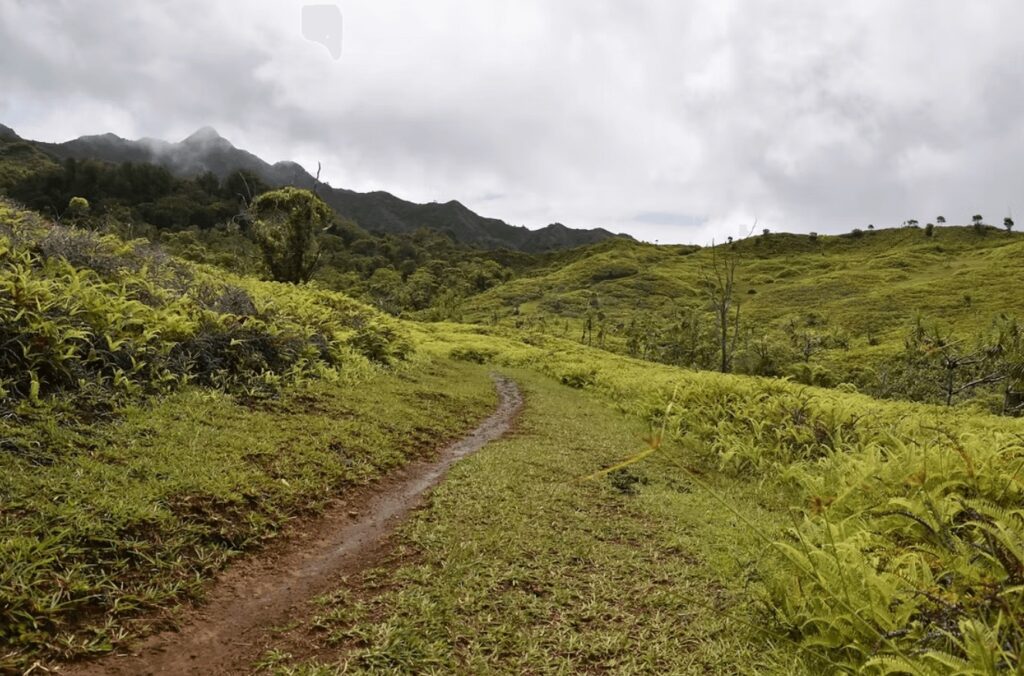
Eco-friendly hotels and resorts in the Marquesas
Hanakee Lodge
On a gently sloping hillside overlooking Atuonas Bay, Hanakee Lodge is one of the best places to stay on Hiva Oa. Its 17 bungalows are imbued with traditional charm, featuring carvings, tapestries and paintings by local artisans.
Whether relaxing on the private terrace of your bungalow, savouring a gourmet meal at the on-site restaurant, or lounging beside the infinity pool, the views from this eco-friendly Marquesas hotel are nothing short of breathtaking.
“Best place to stay on Hiva Oa!” (read more reviews here)
Le Nuku Hiva
Encompassing 20 wooden bungalows, this exclusive oasis is perched upon the dramatic cliffs overlooking Taioha’e Bay on the island of Nuku Hiva. The property has been designed with a deep reverence for Marquesan traditions. It uses only natural materials sourced locally and decorated by artisans from the islands themselves.
But it’s the culinary experience that truly sets this eco-friendly Marquesas resort apart. In fact, the chefs work closely with the island’s hunters and fishermen in sourcing their produce.
“From the moment we arrived at the airport until the moment we were dropped off, we were treated like royalty!” (read more reviews here)

Diving in the Society Islands
Best place for a luxury dive vacation in French Polynesia
Encompassing Tahiti, Moʻorea, Raiatea and Bora Bora, the Society Islands have long been the focus of tourism in French Polynesia. They boast paradisiacal beaches and water so clear it boggles the mind, as well as some of the most luxurious resorts and hotels in the South Pacific.
This is the place for a luxury dive vacation in French Polynesia!
The nutrient-rich waters surrounding the islands attract an impressive array of marine life, creating an underwater spectacle for snorkellers and scuba divers.
There’s the opportunity to explore crystal-clear lagoons, drift along vibrant coral reefs and peer into the mysterious deep blue while catching sight of passing sharks and manta rays.
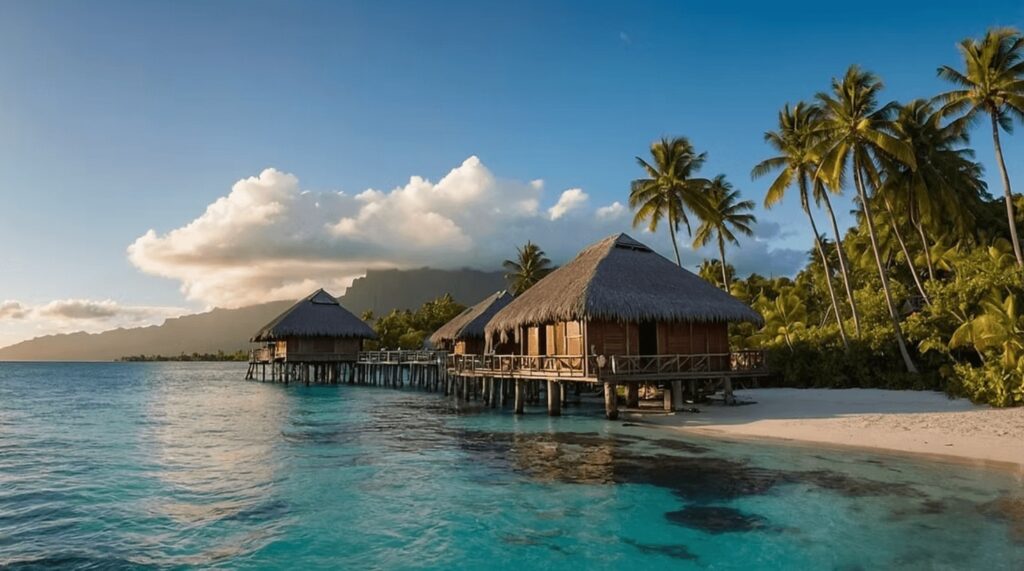
Diving in Tahiti
Best place for accessible diving in French Polynesia
Tahiti, the largest and most populous island in French Polynesia, is the main arrival point for international tourists. It centres around the capital of Papeete. This is a great place to experience the buzz of modern life in French Polynesia.
Beyond the urban hub of Papeete, you’ll find several dive sites that cater to underwater adventurers of all experience levels.
The best dive sites are clustered around the Tahiti Peninsula, which is located on the east side of the island. Known by locals as Tahiti Iti, this volcanic landmass is mountainous and untamed, and one of the best places for spotting whales in Tahiti.
From the shallow coral reefs of the Aquarium to the thrilling drift dives at La Vallée Blanche, Tahiti is an ideal place to develop your dive skills.
And for those seeking land-based activities, you can admire the thundering waters of Fautaua Waterfall or watch surfers take on the legendary wave at Teahupo’o.
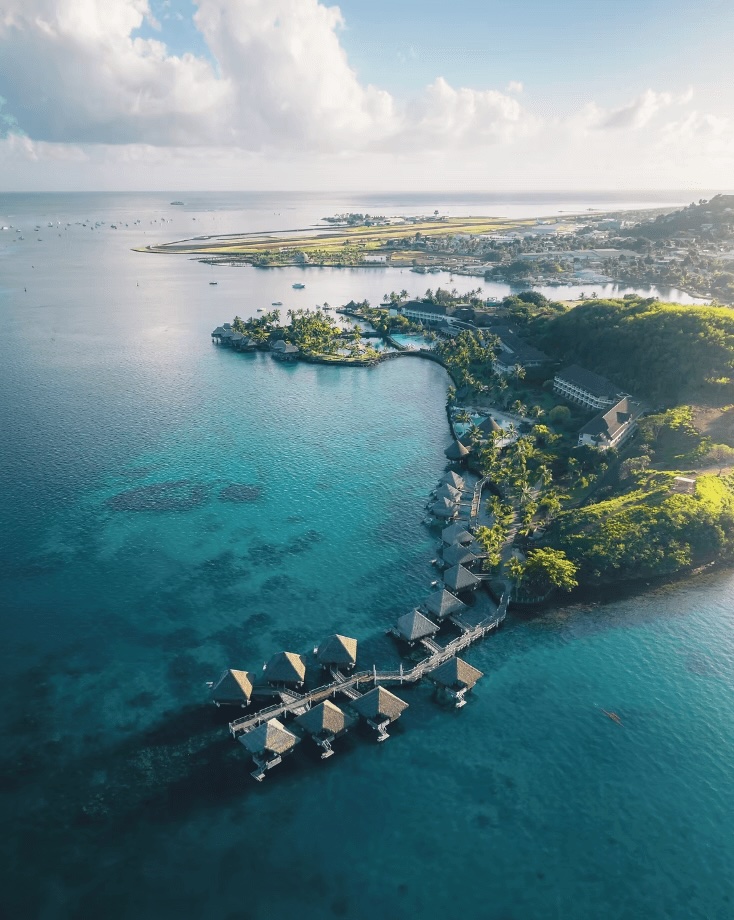
Eco-friendly hotels and resorts in Tahiti
InterContinental Tahiti Resort & Spa
Despite being a big international brand, this eco-friendly Tahiti resort has made a strong commitment to sustainability. It’s conveniently located near Papeete Airport and has an onsite scuba centre, Activiseas, where you can book underwater adventures.
Aside from its overwater bungalows and garden rooms, there’s a spa and a protected lagoon known as Fare l’a Reserve.
“Totally amazing and looking forward to coming back someday.” – Patricia (read more reviews here)
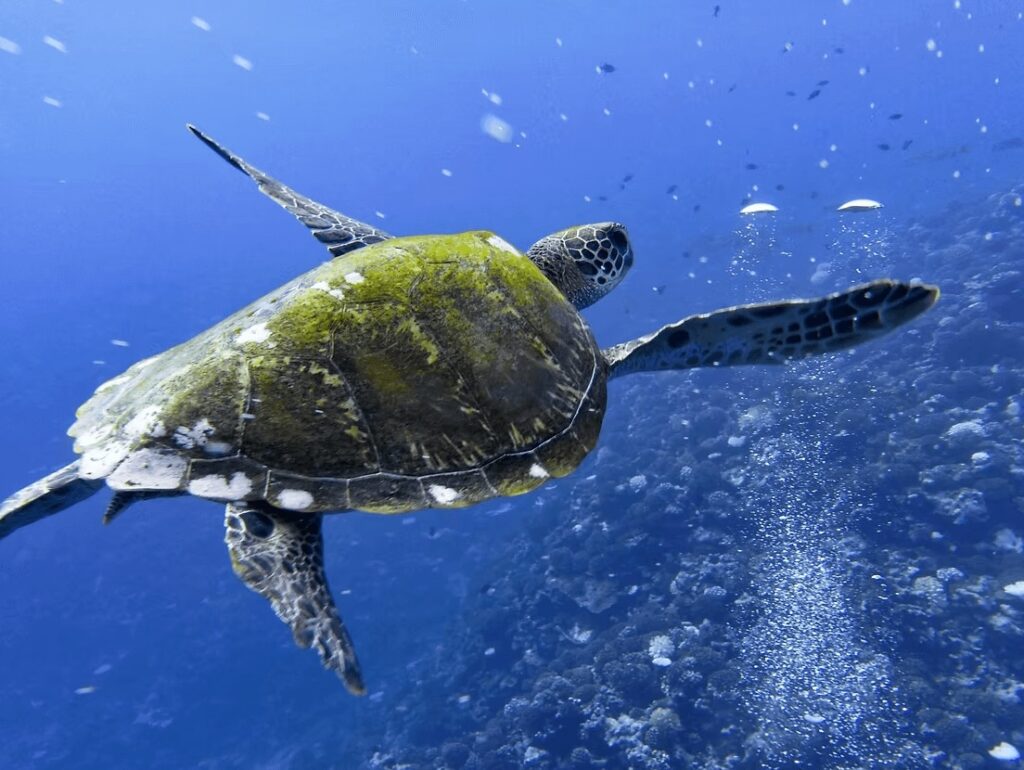
Diving in Mo’orea
Best place for diving with sharks in French Polynesia
Enveloped by a fringing reef, Mo’orea’s current-free lagoon averages just 18 metres in depth. This makes it one of the best places for beginner divers in French Polynesia.
Mo’orea’s underwater landscapes are adorned in rose-shaped corals. Additionally, there’s a three-metre-long channel that offers thrilling drive dives for seasoned scuba enthusiasts.
Mo’orea is one of the rare places on Earth where you can swim alongside humpback whales, which visit on their annual migration. It is also one of the best places in French Polynesia to dive with sharks, including grey reef, tiger, lemon and nurse sharks.
For non-diving family members, there’s the opportunity to snorkel in the shallow lagoon alongside the island’s famously friendly stingrays.
While the underwater world of Mo’orea is undoubtedly alluring, the island’s topside attractions are equally enchanting. You can hike up to the Belvedere Lookout for sweeping vistas across the island or embark on a guided tour of the Te Mana O Te Moana sea turtle sanctuary.
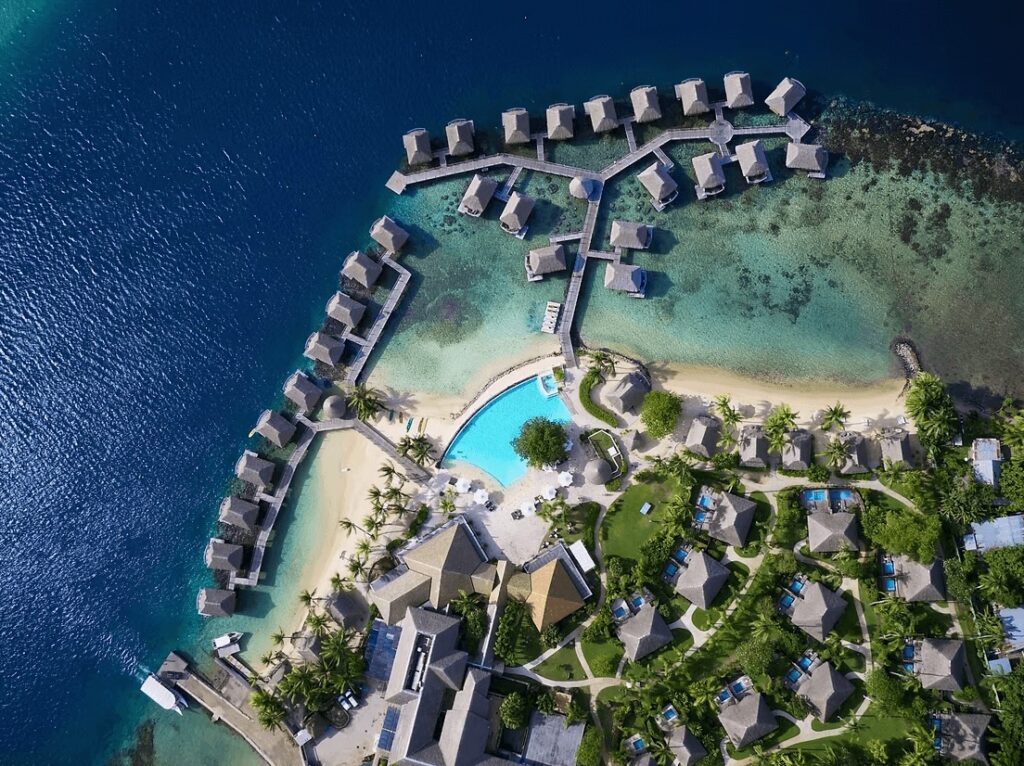
Eco-friendly places to stay in Mo’orea
Manava Beach Resort & Spa
Offering a wide range of accommodations (from overwater bungalows to garden rooms), this eco-friendly Mo’orea resort has been designed in a quintessential Polynesian style.
It’s home to Mo’orea Blue Diving, which offers daily dive trips through the surrounding waters. Additionally, there’s a spa offering traditional Tahitian massages.
Manava Beach Resort & Spa is in the process of implementing an environmental management system that meets the EarthCheck standards.
“Extraordinary stay – it’s a must.” – Sergio (read more reviews here)

Diving in Bora Bora
Best place for beginner divers in French Polynesia
Considered one of the most breathtakingly beautiful islands in the world, Bora Bora is the vision that pops up in many people’s minds when they think of French Polynesia.
This volcanic gem is renowned for its shimmering turquoise lagoon, luxurious overwater bungalow resorts and pristine white sand beaches that seem to stretch on forever.
Towering above the crystalline waters are the island’s dramatic peaks. These include Mount Otemanu, whose jagged silhouette has become an icon of Bora Bora.
Below the waters, you’ll find caves, canyons and thrilling swim-throughs that provide ample opportunity for exploration. Divers also have the chance to encounter manta rays and reef sharks among the schools of tropical fish.
While the diving in Bora Bora is great for beginners, it may not satisfy the urges or interests of experienced scuba divers.
That being said, if you want to enjoy easy underwater adventures combined with luxurious accommodations, gourmet dining experiences and high-end spa treatments, then Bora Bora is the place to head.
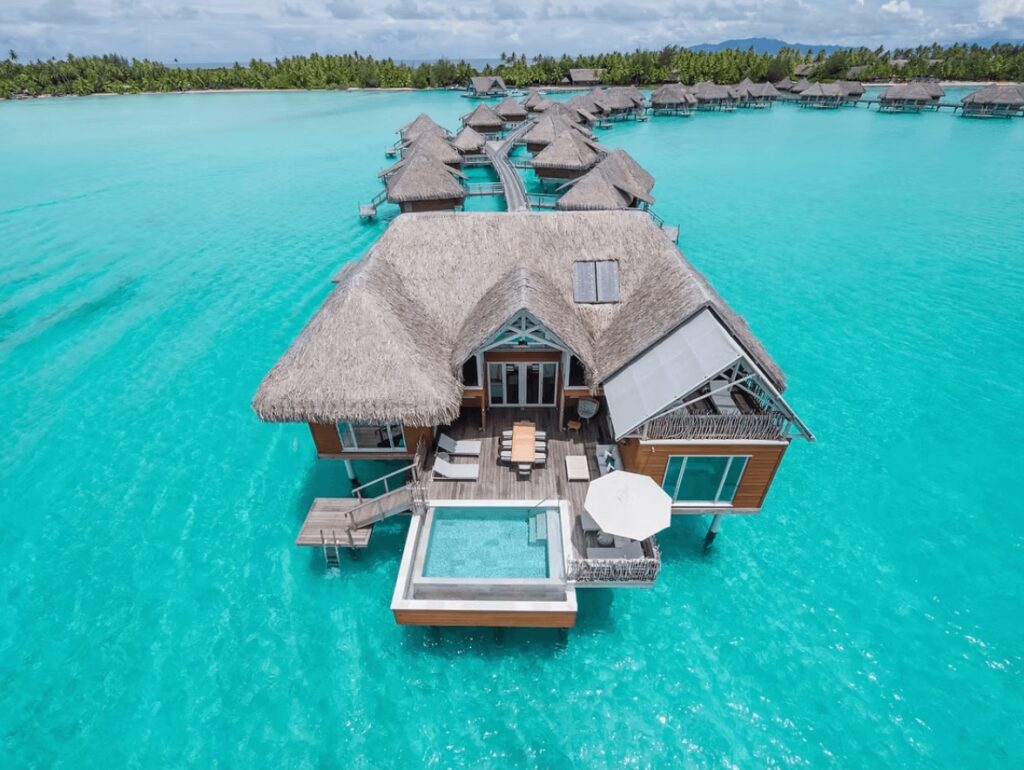
Eco-friendly places to stay in Bora Bora
InterContinental Bora Bora Resort & Thalasso Spa
Situated on the idyllic motu of Piti Aa’u, this eco-friendly Bora Bora resort commands some of the most breathtaking views imaginable. Aside from its luxurious overwater bungalows and romantic dining experiences, it boasts a private beach, an award-winning spa and a protected lagoon and coral nursery.
The resort’s eco-conscious innovations are perhaps its crowning achievement. These include pioneering the world’s first private Sea Water Air Conditioning (SWAC) system to maintain a minimal carbon footprint.
“Amazing stay. Location is perfect. View is so so beautiful. Definitely worth it!” – Valerie (read more reviews here)
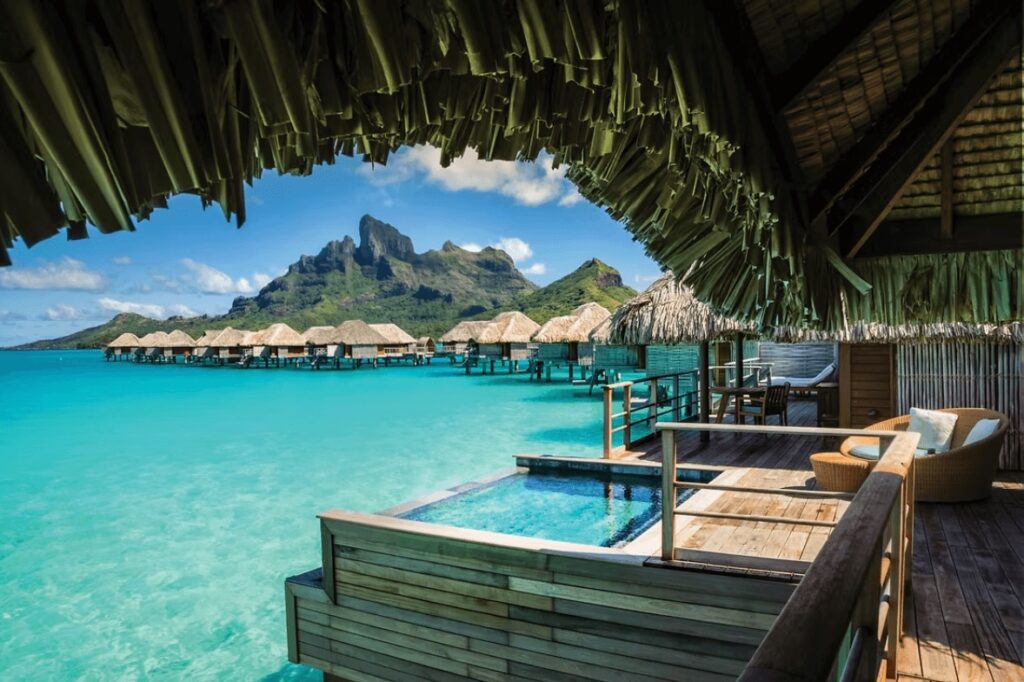
Four Seasons Resort Bora Bora
With its gorgeous overwater bungalows and beachfront villas, the Four Seasons is an ultra-luxurious resort for a Bora Bora dive vacation. It offers incredible views of Mount Otemanu from its elevated wooden walkways and is home to the indulgent Te Mahana Spa with its overwater couples suite.
This luxury French Polynesian dive resort protects the fragile corals of the Ruahatu Lagoon Sanctuary and sources much of its energy from renewable or carbon-free sources. Discovery dives and two-tank trips are available with the in-house scuba team.
“This place is beyond a 5-star resort, they really make you feel like family.” – Edgar (read more reviews here)
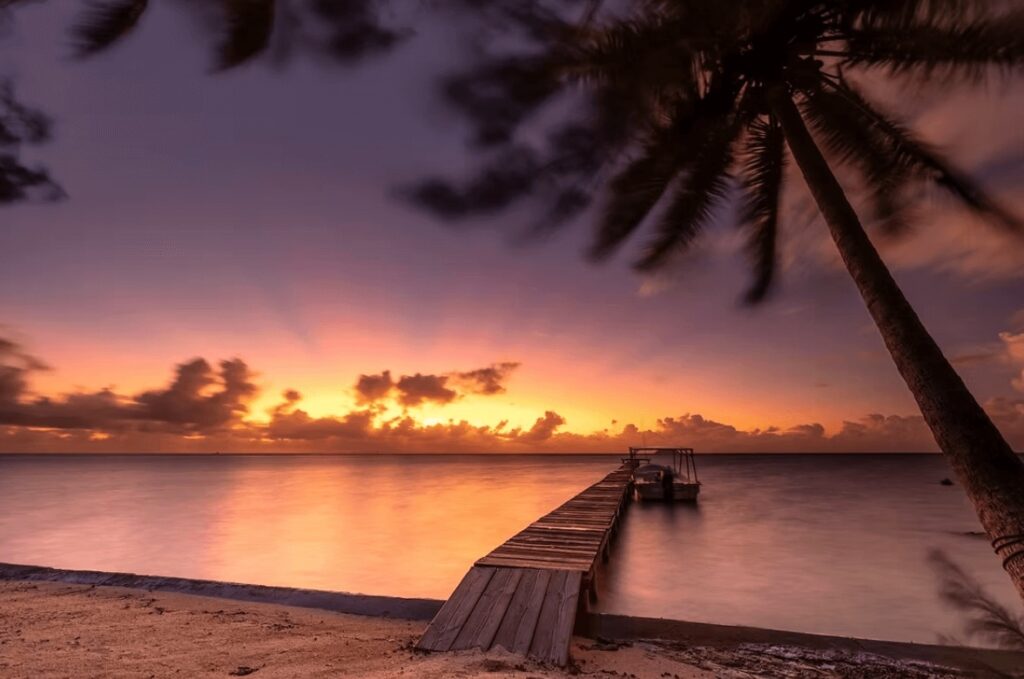
Diving in Raiatea
Best place for wreck diving in French Polynesia
Raiatea may not be as well-known as some of the other Society Islands but it holds immense cultural significance. Often referred to as the “sacred island,” Raiatea is home to a UNESCO World Heritage-listed marae (ceremonial gathering place) that was once considered the religious and cultural hub of Eastern Polynesia.
When it comes to diving, Raiatea offers an abundance of underwater sites to explore. There’s everything from seamounts and caverns to dramatic drop-offs teeming with pelagic marine life.
One particularly renowned dive is the wreck of the Nordby, a three-masted ship that sank in 1900. It now rests at a depth of 29 metres. Considered one of French Polynesia’s best wreck dives, it supports a thriving artificial reef.
For those seeking a more leisurely aquatic experience, the island’s inner lagoon hosts serene, shallow sites that are ideal for novice divers. There’s also the opportunity to kayak up the Faaroa River (the only navigable river in French Polynesia), visit one of the local vanilla farms and hike to some of Raiatea’s picturesque waterfalls.
If you love exploring remote scuba destinations, check out our guide to diving Micronesia, including Palau.
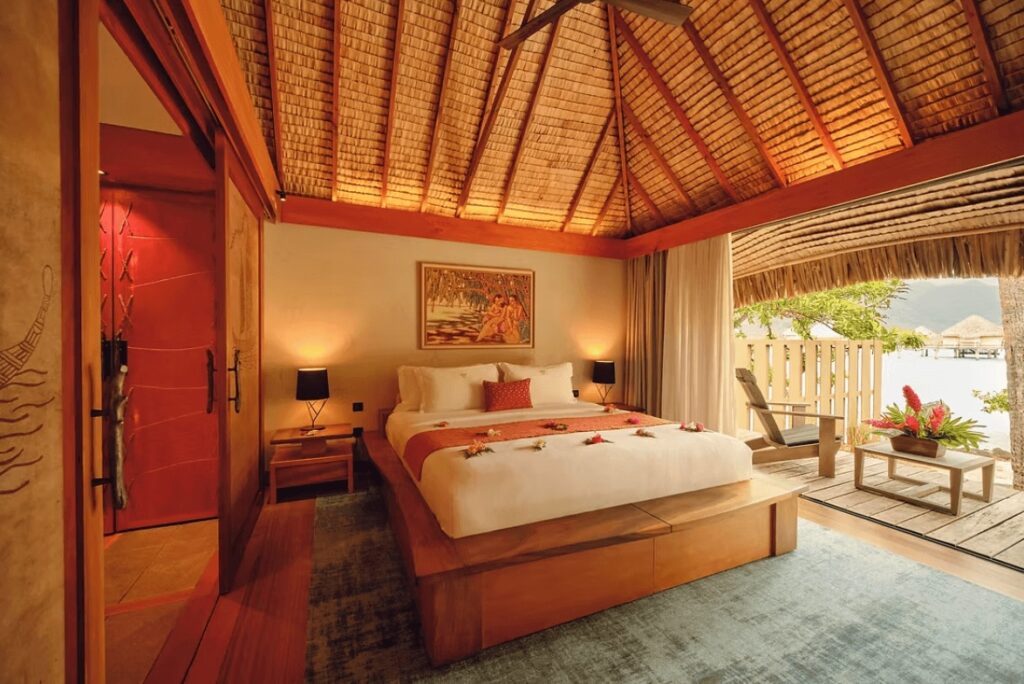
Eco-friendly places to stay on Raiatea
Le Taha’a by Pearl Resorts
Offering views of Bora Bora from its idyllic setting on a private motu, this eco-friendly French Polynesia resort is just 35 minutes by boat from Raiatea Airport. It was the first Relais & Chateaux property established in Tahiti, with just 58 suites and villas giving it an intimate feel.
Daily dives can be conducted with Hemisphere Sub Plongée, which is located at the Apooiti Marina.
“The resort, the coral reef, the service and the staff friendliness. Overall it’s one of the best resorts I’ve ever been to.” – Luca (read more reviews here)
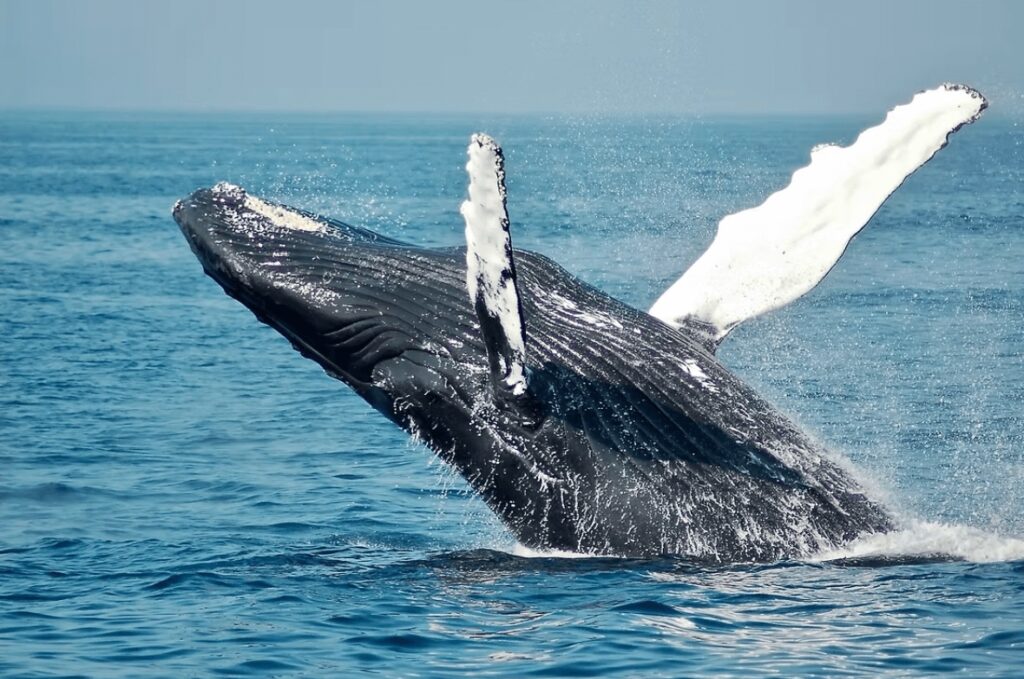
Diving in the Austral Islands
Best place for swimming with humpback whales in French Polynesia
Situated at the southernmost reaches of French Polynesia, the Austral Islands are an untouched paradise where the Polynesian culture still thrives. Blissfully remote, the archipelago boasts art-filled villages and numerous hiking trails that wind through coffee, pineapple and lychee plantations.
The slightly cooler temperatures of the surrounding ocean create a unique marine environment. It’s also worth noting that the Australs are one of the few island groups in French Polynesia without a lagoon.
Divers can explore the drop-offs and cavities of Peva Pass or observe large schools of tropical fish in the crystal clear waters of Una’a Point.
Between August and October each year, Rurutu (the aptly named “Island of the Whales”) plays host to the annual breeding migration of the southern humpback whales. Witnessing these gentle giants is an incredible experience as they breach and cavort in the azure waters.
Eco-friendly places to stay in the Austral Islands
Tavaetu Guesthouse
Set amidst lush countryside on the edge of a lagoon, this whitewashed residence can accommodate up to nine people in its four guest rooms. There’s a well-equipped kitchen, as well as a pizzeria and food trucks not far away. This eco-friendly guesthouse is home to Tubuai Plongee, the only dive centre in the Austral Islands.
“Tavaetu guesthouse is a wonderful place to stay in Tubuai.” (read more reviews here)
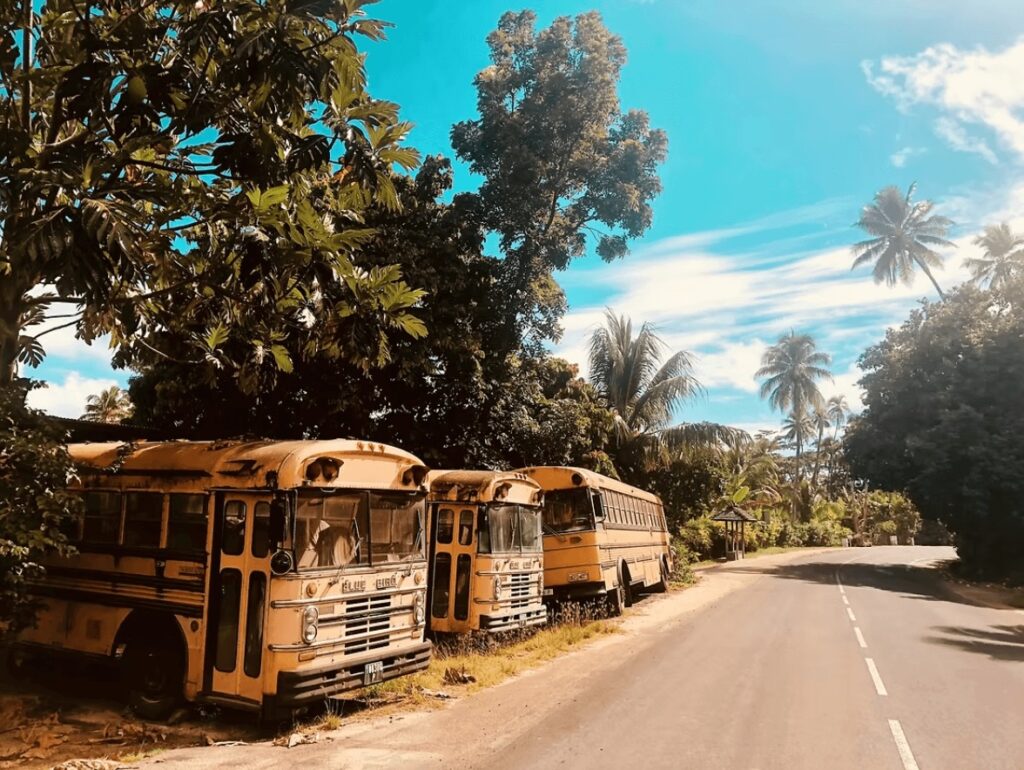
Best time to dive in French Polynesia
Generally speaking, May to October is considered the best time to dive in French Polynesia due to the dry weather and calm seas. Water temperatures average around 26 to 28°C (78 to 82°F) and humpback whales visit from August to late October.
November to April is the rainy season, but there is still great diving on offer. In fact, this is the best time to spot hammerheads in the Tuamotu Islands (particularly from February to March).
In contrast, the Marquesas Islands (located further north and closer to the equator) experience a hotter and more tropical climate year-round. The best time to dive here is during the dry season, which runs from May to October. During this period, the skies are typically clear and the waters are calm, with visibility at its best.
FAQs about diving in French Polynesia
Is French Polynesia good for diving?
Sprawling across the South Pacific, the islands of French Polynesia offer some of the most incredible diving experiences on the planet.
This far-flung French territory is renowned for its mind-blowing pelagic encounters (there are literally “walls of sharks”). It also boasts spectacular coral reefs and exhilarating drift dives through current-swept passages.
French Polynesia caters to divers of all skill levels, from complete beginners to seasoned veterans wanting to come face-to-face with majestic oceanic creatures.
Whether you want to stay in one of Bora Bora’s iconic overwater bungalows or explore the rugged volcanic landscapes of Marquesas, a dive vacation in French Polynesia is sure to be unforgettable.
How much experience do you need to dive in French Polynesia?
For novice divers, the shallow waters of the lagoons in Bora Bora and Mo’orea provide the perfect environment to hone your skills. They boast excellent visibility and minimal current.
These protected areas are teeming with colourful tropical fish, friendly rays and even the occasional reef shark or sea turtle. The majestic top-side scenery only adds to the experience, making French Polynesia a wonderful place to get certified.
As divers gain more experience, they can venture out to the more challenging French Polynesia sites, where strong currents and greater depths await.
The channels between the atolls of Fakarava and Rangiroa can feature powerful currents that require advanced buoyancy control. Meanwhile, some of the deep seamounts and shipwrecks in French Polynesia are only suitable for divers with appropriate training.
It’s important to note that French Polynesia has strict regulations in place to ensure diver safety, including depth limits that cannot be exceeded without the proper qualifications. Even experienced divers with a Deep Diving certification are not allowed to venture beyond 30 metres without additional certifications, such as Rescue Diver training.
When is the dive season in French Polynesia?
The ideal time for diving in French Polynesia is generally from May to October when the weather is dry and the seas are calm. With average temperatures between 26 and 28°C (78 and 82°F), this period also welcomes humpback whales from August to late October.
Although the rainy season spans from November to April, diving remains good, especially for spotting hammerheads in the Tuamotu Islands.
Situated further north and closer to the equator, the Marquesas Islands enjoy a hotter and more tropical climate throughout the year. The prime diving season here falls between May and October. This period is characterised by clear skies and calm waters, providing optimal visibility for divers.
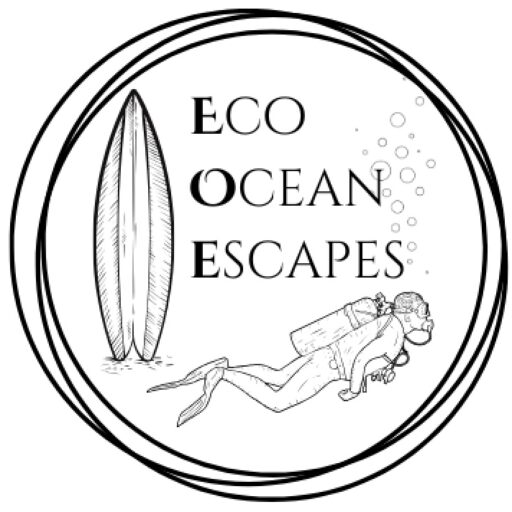
PLAN YOUR TRIP WITH OUR FAVOURITE RESOURCES:
Find hotels and resorts via Booking or Agoda
Book tours and experiences via Viator or GetYourGuide
Find a rental car via Discover Cars
Book flights via Kiwi or Booking
Search for buses and trains via 12Go or Omio
Get travel insurance via SafetyWing
Buy a digital eSIM with Airalo
By purchasing through our links, you’ll be supporting our website at no additional cost to you
About the authors
We are a team of passionate divers and surfers with decades of combined experience in the water and travelling to all corners of the globe. After years of chasing waves and descending into the deep blue, we’ve created this resource to highlight sustainably run surf camps, eco-friendly dive resorts and conservation-focused ocean trips to help inspire your next adventure.
Eco Ocean Escapes was born out of a love of the ocean, an obsession with travel and a concern about the impacts of our adventures on the environments we explore. Despite the benefits that surf and dive tourism can bring to local communities, we recognised that ocean-based adventures are not always managed in a sustainable manner.
Through our articles, we hope to inspire those seeking a responsible surf or dive trip that is all about supporting local communities, preserving our coastal environments and the incredible marine species that inhabit our oceans.
-
Sustainable Surf Tourism and Respecting Local Communities
Surf tourism has exploded over the last two decades. With travel becoming more accessible and social media exposing hidden spots, once-remote breaks in Indonesia, Central America, Morocco and the Pacific Islands are now iconic stops on global surf circuits. While surf travel brings income, jobs and global attention to coastal towns, it can also disrupt…
-
Inspiring Citizen Science Projects for Surfers + How to Get Involved
As surfers, we are intimately connected to the ocean – its rhythms, its wildlife and its health. Because of this relationship, many of us are looking for meaningful ways to protect the marine environments we love. One of the simplest and most impactful ways we can do this is by joining citizen science projects. These…
-
Understanding Marine Protected Areas (MPAs): Why divers should care
If you’ve spent time underwater (as a diver or snorkeller), you’ve probably noticed something: not all sites are beacons of health. Some reefs appear vibrant and full of life, while others show signs of stress – broken coral, few fish or algae-covered rocks. One of the biggest factors shaping the health of our oceans is…
-
Costa Rica: Best Marine Parks for Scuba Divers + Eco Dive Resorts
Costa Rica is a paradise for eco-conscious travellers and underwater explorers are no exception. With its healthy coral reefs, pelagic-rich waters and some of the most progressive environmental policies in the world, the country is a dream destination for those who want to dive responsibly. We’ve been lucky enough to visit Costa Rica several times…
-
Eco-Diving: Best Destinations for Sustainable Scuba Travel
As humans inspired by the underwater world, there is plenty of incentive to protect our coral reefs. Here at EcoOceanEscapes, we want to do our bit to save endangered marine species and keep our oceans free of trash. One impactful action we can all take is to choose sustainable diving destinations. These are nations (or…
-
Eco-Friendly Diving: How to Be a Sustainable Scuba Advocate
Understand the environmental impacts of diving and sustainable scuba practices in this comprehensive guide to eco-friendly diving. Any diver will tell you that being underwater is an incredible experience. It’s a world that not everyone has the opportunity to explore and the encounters we have with marine creatures can be life-changing. Watching manta rays soar…

We are a team of passionate divers and surfers with decades of combined experience in the water and travelling to all corners of the globe.
After years of chasing waves and descending into the deep blue, we’ve created this resource to highlight sustainable surf camps, eco-dive resorts and conservation-focused ocean trips to help inspire your next adventure.
Eco Ocean Escapes was born out of a love of the ocean, an obsession with travel and a concern about the impacts of our adventures on the environments we explore.
